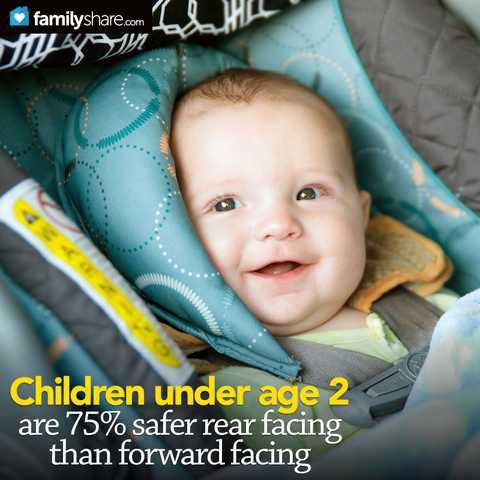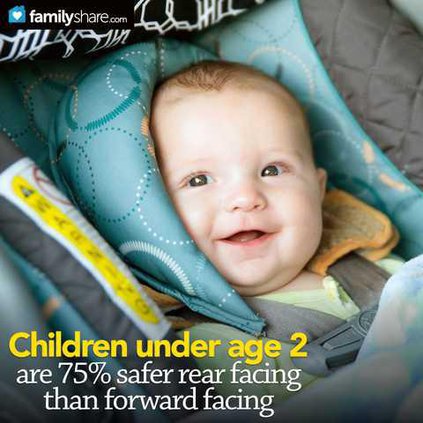The process of finding the proper car seat for your child is daunting. And the days of a single seat throughout their childhood is gone. Now it is rear-facing, front-facing, booster seat, rear seat.
These decisions made into laws are not the result of whims or the industry. It comes from much scientific study, and is in the best interest of our children to adhere to them.
You should learn the laws in your particular state, and this is a good site to look at for that.
Here's the general reasoning behind the different safety seating for your children:
Rear-facing car seats. All children should start out in rear-facing car seats. The American Academy of Pediatrics recommend that you keep them in these seats up to age 2, though longer is better. The science behind this is that infants and toddlers are not small adults. Their spines are still developing and carry a much greater weight proportionally than an adult's spine. A 9-month old's head makes up 25 percent of his total weight, compared to 6 percent in adults. In addition to this vulnerability, statistics show that 60 percent of crashes are frontal and 20 percent are side-impact. Since the body continues moving toward the point of impact, rear-facing car seats allow the baby's large head and spine to settle into the car seat, where the front-facing seat throws their head and necks forward, potentially causing a lot of damage and even death. This statement is from the AAP: "Researchers compared the injuries sustained by the children in crashes and found the odds of severe injury for forward-facing infants under 12 months of age were 1.79 times higher than for rear-facing infants; for children 12 to 23 months old, the odds were 5.32 times higher.” It is difficult for children, particularly as they get closer to age 2, to face the rear. However, that is insignificant compared to their safety in a crash.
Front-facing car seats. Once your child is older and larger, you may opt for the front-facing car seats. These are recommended to age four. When purchasing a front-facing car seat, check the weight recommendations. You may go through a couple or more as the child grows. Make certain that the seat is anchored properly and that the belts are positioned where they should be and are snug.
Belt-positioning booster seats. Once a child is four, they can ride on a belt-positioning booster seat with a shoulder harness. The recommendation is that they use these until they are eight years of age. Always make certain the belt is fed through the slots properly and that it is snug against the body. You can purchase fasteners that keep the shoulder harness from rubbing against the child's neck.
Back seat until age 13. Once the child is eight, they are ready to use a regular seat belt with shoulder harness. It is strongly recommended that your child ride in a back seat until they reach the age of 13.
To summarize: AAP District V Chair Marilyn Bull, M.D., FAAP, advises pediatricians to memorize a few salient points and deliver what she calls an “elevator speech.”
1. Children under age 2 are 75% safer rear facing than forward facing.
2. Children in the second year of life are five times less likely to die or be seriously injured in a crash if rear facing than forward facing.
3. Only approximately 1 in 1,000 children who are rear facing will suffer a lower extremity injury. That rate is much higher for forward facing children.
4. The back seat is the safest place for all children to ride.
One of the hardest things a parent has to do is to listen to a tantruming child who isn't happy in their car seat. They want to turn around. They want to be free of the restraints. They want to ride in the front. But our responsibility is to keep them safe for as long as we can.
One last note: all of these guidelines are based on algorithms and parents should opt for the "longer the better" rule of thumb. Children will vary greatly in weight, height and body mass. Err on the side of caution.
Becky Lyn is an author and a 35+ year (most of the time) single mom. Visit Becky Lyn's Website. or write her at beckytheauthor@gmail.com








